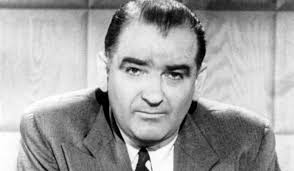June 17, 2019 –
There’s an often-overlooked indicator the Trump trade tariffs are important for a stronger U.S. economy.
Obviously, President Trump has vehemently worked to stop unfair trade practices and improve the balance of trade.
That’s why he’s battling China in a trade war and why he threatened Mexico with tariffs until it agreed to help stop the flow of hundreds of thousands of illegal immigrants which cost federal, state and local taxpayers $116 billion in 2017 according to a study released by the Federation for American Immigration Reform.
True, his efforts have been important to improve the plight of the manufacturing sector. But it turns out a benefit of the trade skirmishes amounts to more than creating new manufacturing jobs.
Shocking, little-known data
Before the election of President Trump, too many production workers were drawing welfare-related benefits to supplement their wages. (But more on that later.)
It’s widely accepted his election prompted a surge in optimism for the economy and stock market.
Just after he was elected, the CNBC All-America Economic Survey said 74 percent of respondents were excited about economic prospects – the highest level since 2008.
It said 56 percent of respondents soon backed the policies of Mr. Trump compared to 43 percent before his election. The increase in optimism stemmed from 91 percent of Republicans and 54 percent of independents and 23 percent of Democrats.
When asked to name the No. 1 priority for Mr. Trump, 40 percent said keep jobs from going abroad.
Consumer confidence also soared in another poll – the University of Michigan consumer confidence survey.
Blue-collar worker worries
You might recall Mr. Trump’s biggest support came from blue-collar workers.
One reason for their support is clear.
More than 33 percent of U.S. manufacturing workers and 50 percent of manufacturing workers hired through temporary agencies were on at least one welfare program. That’s according to 2016 research by the University of California, Berkeley’s Center for Labor Research and Education (http://laborcenter.berkeley.edu/).
The aggregate price tag to taxpayers was $10.2 billion. In 1991, 1 percent of manufacturing jobs was temporary. In 2016, it was 9 percent.
In median wages, temp workers made $10.88 an hour. Permanent jobs paid $15.03.
“Manufacturing has long been thought of as providing high-paying, middle-class work, but the reality is the production jobs are increasingly coming to resemble fast-food or Walmart jobs, especially for those workers employed through temporary staffing agencies,” said Ken Jacobs, chair of the Labor Center and co-author of the report.
“While employment in manufacturing has started to grow again following the Great Recession, the new jobs created are less likely to be union and more likely to pay low wages,” he added.
The five most-utilized benefit programs:
- Medicaid
- Children’s Health Insurance Program (CHIP)
- Federal Earned Income Tax Credit (EITC)
- Food stamps (the Supplemental Nutrition Assistance Program, or SNAP)
- Household income assistance (Temporary Assistance for Needy Families, or TANF)
Additional key report findings:
- Eight of the 10 states with the highest participation rates in public assistance programs that support frontline production workers’ families are in the American South; the other two states are New York and California. Mississippi has the highest participation rate, at 59 percent.
- This high use of public safety net programs by frontline manufacturing production workers is due to low wages, not limited work hours. The families of 32 percent of all manufacturing production workers, and 46 percent of those employed through staffing agencies who worked at least 35 hours a week and 45 weeks during the year, were enrolled in one or more public safety-net program.
Economic solution
Mr. Trump’s solution for the low-wage manufacturing-job and public-assistance situation: Grow the economy to create the most-possible high-paying jobs.
He’s succeeding on this quest despite a do-nothing Congress and incorrect claims by Democrats and media pundits that President Obama left Mr. Trump an ideal economy.
True, Mr. Obama assumed a financial crisis and recession. The unemployment rate had been a high 10 percent. In his presidency’s eight years, 14 million jobs were created. But federal data showed a majority of those jobs were only part-time.
In the first 26 quarters of Mr. Obama’s recovery, the gross domestic product only increased an average 2.1 percent. In his last year in office, Mr. Obama’s GDP barely averaged above 1 percent.
In comparison, President Reagan faced a much tougher situation than President Obama – a 10.8 percent unemployment rate, a sky-high prime rate tied with double-digit interest rates and a debilitating recession. But his policies ultimately created 19 million jobs and fuller employment.
Unlike the tepid Obama recovery, in the first 26 quarters of Mr. Reagan’s recovery, GDP exploded to an average 4.6 percent annually.
Like President Reagan, Mr. Trump knew he had to clear a path for companies to invest and increase wages.
To spark economic and business growth – Mr. Trump’s three key strategies:
- Decreased the business tax rate from 35 percent to 15 percent and eliminated the corporate alternative minimum tax.
- Reformed the regulatory code and revoked all the over-reaching Obama executive orders that killed jobs but failed to enhance public safety.
- Implemented cost-cutting measures and took steps to reduce the skyrocketing national debt.
But he can’t do it alone. Unfortunately, so far, the national debt has continued to grow as a result of excessive spending and disingenuous earmarks inserted into bills by members of Congress.
The bottom-line:
So far, much of his three strategies is working. Since his election, the unemployment rate has dropped to its lowest level since 1969, a half-million new manufacturing jobs have been created, wages in all sectors have increased by an average 3.2 percent, and there are now seven million unfilled jobs.
From the Coach’s Corner, more public-policy articles:
Myths and Truths about Dealing with China and the Tariffs – Five decades ago, the U.S. and China did not have diplomatic relations. But in 1972 it was universally felt that diplomatic relations with China was a worthwhile optimistic goal. Now as it turns out, China’s behavior has become an economic and political powder keg. Here is the solution.
USMCA Will Stop that ‘Giant Sucking Sound’ – You might recall what many politicians considered a ridiculous idea during a debate in the 1992 presidential campaign. Two years before it was implemented in 1994, Ross Perot argued NAFTA would not be a two-way street. Though sounding facetious, he accurately predicted NAFTA would create a giant sucking sound.
1.36 Million Jobs Would be Created by Tariffs on China – Study – A 25 percent tariff on all imports from China would create 1.36 million jobs in five years, according to an economic study.
Governments – from Cities to Federal – Dangerously in Debt — The U.S. economy has been slowly mending. However, the situation is bleak for governments at all levels. Why? High debt is dangerous. This is best illustrated by the U.S. Debt Clock.
Analysis: Trump’s Vision to Fix Trade Deficit, Create Jobs — Donald Trump acts positively: Americans are tired of the reign of politically correct terror, the movement for income redistribution, and the massive loss of good-paying jobs.
5 Shocking Lessons from Donald Trump’s Taxes — In analyzing the mess from the mud-slinging over Donald Trump’s taxes, we can reasonably arrive at five conclusions.
“Government’s view of the economy could be summed up in a few short phrases: If it moves, tax it. If it keeps moving, regulate it. And if it stops moving, subsidize it.”
-Ronald Reagan
__________






